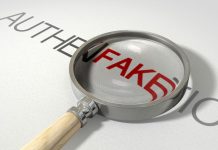This article is written by Harman Juneja, from Dr. B.R. Ambedkar National Law University, Rai, Sonepat. The article talks about the new regulatory regime for eight medical items under the Drugs and Cosmetics Act, 1940.
Table of Contents
Introduction
The article talks about the changes recently made in the Drugs and Cosmetics Act, 1940. Eight new items have been added to the list of regulated items. Along with this, manufacturers and importers must get a manufacturing licence from the Central Licensing Authority or the State Licensing Authority, as per the new directive. These regulations are imposed to make sure that foreign companies stop exploiting Indian markets and to make a robust mechanism for better regulation of the medical system.
Drugs and Cosmetic Act, 1940
The Drugs and Cosmetics Act of 1940 is an act enacted by the Indian Parliament that regulates the import, manufacture, and distribution of medicines in the country. The Act’s principal goal is to ensure that drugs and cosmetics that are being sold in India are safe, effective, and meet state quality standards. The associated Drugs and Cosmetics Rules, 1945, provide provisions for categorising drugs into schedules, as well as guidelines for storage, sale, display, and prescription of each category.
Objectives of the Act
- The D&C Act was passed on April 10, 1940, with the main goal of allowing the import, manufacture, distribution, and sale of drugs and cosmetics.
- The Act governs the import of medications into India, ensuring that no substandard or counterfeit drugs enter the nation.
- The statute forbids the manufacture of inferior or counterfeit drugs in the country.
- The Act mandates the sale and distribution of pharmaceuticals by only trained and competent individuals, as well as the manufacture, sale, and distribution of Ayurvedic, Siddha, Unani, and Homeopathic drugs.
- The Act’s provisions govern the import, manufacturing, sale, and distribution of cosmetics.
- To have drug inspectors visit licenced premises regularly.
- Controlling the standards of pharmaceuticals and cosmetics by collecting samples and studying them in recognised laboratories.
- To make special regulations to govern the preparation, standardisation, and storage of biological and special products, as well as to prescribe how various classes of medications and cosmetics should be labelled and packed.
The Act tends to define a lot of different terms such as:
- Drugs- All medications for internal or external use in humans or animals, as well as all substances intended to be used for or in the diagnosis, treatment, mitigation, or prevention of any disease or disorder in humans or animals, including preparations applied to the human body to repel insects such as mosquitoes, are prohibited.
- Cosmetic- Any object meant to be rubbed, poured, sprinkled, or sprayed on, or inserted into, or otherwise applied to, the human body or any part thereof for washing, beautifying, enhancing attractiveness, or altering appearance, including any material intended to be used as a component of cosmetic.
- Misbranded drugs- (a) if it is dyed, powdered, coated, or refined in such a way that harm is hidden or that it appears to have a better or greater therapeutic effect than it does; or (b) when it is not labelled in the form prescribed.
- Adulterated drugs- (a) if it is totally or partially made up of dirty, rotten, or decomposing matter; or (b) if it was made up entirely or in part of any poisonous or deleterious substance that may render the contents poisonous or deleterious; or (c) if it was made up entirely or in part of any filthy, putrid, or decomposed substance.
- Spurious drugs- (a) if it is acquired under a title that belongs to another drug; or (b) if it is a replica of, or a replacement for, another drug, or matches another drug in a way that is likely to deceive, or has the name of another drug on it, its label, or container.
- Manufacture- It shall include all processes or parks for preparation, alteration, ornamentation, alteration, finishing, packing, breakage or otherwise treatments or for the adoption of any medicament/cosmetics in the ordinary course of retail businesses, but shall not include the compounding or delivery of any medicament or the packaging of any medicinal product or cosmetics.
- Proprietary medicine or Patent- A medicine presented in the form ready to be administered internally or externally to people or animals and currently not listed in the Indian Pharmacopoeia edition or any other pharmacopoeia authorised by the Central Government in this name.
Drugs and Cosmetic rules, 1945
The Drugs and Cosmetics Rules, 1945 are the regulations enacted by the Indian government in response to the Drugs and Cosmetics Act, 1940. These rules classify medicines following certain timetables and provide the storage, sale, display and prescription guidance for each timetable.
The Drugs and Cosmetics Rules of 1945 includes clauses for classifying drugs into schedules, as well as guidelines for storing, selling, displaying, and prescribing each schedule. The terms of licences are detailed in Rule 67. The labelling restrictions are found in Rule 97.
In matters relating to the technical specifics of drugs, the Drugs Technical Advisory Board is the highest decision-making body. The Drugs and Cosmetics Act of 1940 established the board.
Regulation of eight medical items
The following are the eight new medical items that are now regulated under the Drugs and Cosmetics Act, 1940:
- Bone Marrow Cell Separator- Bone marrow cell separator is lab equipment used to isolate cells from bone to blood
- X-Ray machine- It is a machine that helps in getting X-rays. It consists of an X-ray detector and an X-ray generator. X-rays are types of electromagnetic waves. X-ray imaging is a type of imaging that generates pictures of the inside of your body.
- Dialysis machine- The dialysate is mixed and monitored by the dialysis machine. Dialysate is a fluid that aids in the removal of undesirable waste products from the bloodstream. It also helps in the replenishment of electrolytes and minerals in your body.
- PET Equipment- PET (polyethylene terephthalate) is the most popular thermoplastic polymer resin of the polyester family and is used in garment fibres, liquid and food containers, thermoforming for manufacturing, and engineering resins in conjunction with glass fibre.
- Defibrillators- A defibrillator is a machine that delivers a high-energy electric shock to a person who is experiencing cardiac arrest. Defibrillation is the name for this high-energy shock, and it’s an important element of attempting to resuscitate someone who’s in cardiac arrest.
- MRI Equipment- Magnetic Resonance Imaging (MRI) is a non-invasive imaging technique that provides precise three-dimensional anatomy pictures.
- CT Scan Equipment- A computerized tomography (CT) scan combines a sequence of X-ray pictures taken from various angles around your body with computer processing to generate cross-sectional images (slices) of the bones, blood arteries, and soft tissues within your body.
- All Implantable Medical Devices- Devices used for any kind of implant such as a dental implant, etc.
Manufacturers and importers must get a manufacturing licence from the Central Licensing Authority or the State Licensing Authority, according to the new directive. In India, medical device imports account for more than 75 percent of overall medical device sales. Indian enterprises will upgrade their products to international standards by bringing more medical equipment under the Drugs and Cosmetics Act’s controls. It raises the makers’ and importers’ accountability. It gives customers a sense of security.
What led to these changes
Recently the largest compensation ever has been awarded by the government in the Johnson & Johnson (J&J) faulty hip implant case which is over Rs 1 crore to a citizen of Uttar Pradesh. The regulatory agency for Indian pharmaceuticals and medical devices, the Central Drugs Standard Control Organisation (CDSCO), issued an order on Tuesday instructing J&J to pay Rs 1,01,25,993 to one patient and Rs 90,26,567 to another from the same state. In April of this year, the first victim from Maharashtra received Rs 74.5 lakh, while the second victim from Delhi was awarded Rs 65 lakh. So far, compensation has been paid to four victims in the case, and roughly 200 applications are being considered. So now the question is what exactly is the case.
Johnson & Johnson is an American multinational corporation with headquarters in New Jersey that deals with medical devices, pharmaceuticals, and consumer goods. The corporation received a licence to import the device in India in 2006, and it was renewed in 2010, just months before the global recall. The Articular Surface Replacement device is a metal-on-metal device that relies heavily on cobalt and chromium. They were made on a metal-on-metal basis in the hopes that the implant would survive a long time and aid in enhancing mobility. The metal in the implant appeared to be degrading, causing bone and tissue damage as well as leaching hazardous elements including cobalt and chromium into the patient’s bloodstream and due to this reason the recall was done by the company.
An estimated 4,700 ASR implants had been performed in the country by the time it was recalled worldwide. In 2017, the Health Ministry established an expert group to investigate difficulties stemming from faulty ASR implants in India, in response to international concerns and due to cases filed by some of the patients. Even though more than 3,600 of the 4,700 patients could not be located, the committee wrote to 101 of them, and 22 of them responded. The committee found that not only did patients have revision operations following their initial surgeries, but also in certain circumstances, more than one revision surgery was performed. Some of the patients had claimed that they had to endure excoriating pain during all of this, particularly after the implant. Some of them indicated that they are still having difficulty carrying out their usual activities and are restricted to bed, which has led to mental turmoil and agony, the committee said.
With the consent of Hon’ble Health and Family Welfare, the report was adopted by the Central Government with minor changes. Johnson & Johnson has also compensated patients in the United States who received faulty implants. In India, however, the business is fighting government orders to reimburse 4,700 patients who had hip replacement procedures.
As a result, Johnson and Johnson continued to take advantage of India’s regulatory gap as in the earlier Drugs and Cosmetics Act of 1940, there were no particular legal provisions or standards that give recompense to patients in such circumstances. Keeping these problems in mind the changes were made.
The ministry took the first step toward this framework in 2017 when it published the Medical Device Rules, 2017. Only a few medical gadgets were classified as “drugs” at that time, but currently, all of them are expected to fall into this category. This means that all medical devices would fall under the scope of the 2017 Medical Device Rules.
Conclusion
The new regulations are a good way forward for better regulation of the market as a lot of big players in the market are exploiting the loopholes and these exploitations can harm the health of individuals and can even cost the lives of people thus changes are required. However, this does not end the story here. First of all, it will result in a toothless regulatory system for devices, similar to the current regulatory structure for medicines.
The ministry’s rule-making authority does not allow it to create new offences or sanctions. Only new offences and penalties are created by legislation adopted by Parliament. As a result, there are no penalties in the Medical Device Rules 2017. The Drugs and Cosmetics Act, 1940 does have a penalty provision for the manufacture of substandard drugs, but it cannot be used to punish manufacturers of substandard medical equipment because the Second Schedule of the Drugs and Cosmetics Act only recognises legally binding standards for drugs, which means there are no standards for medical devices and no prosecution of a manufacturer of medical devices. Still, inadequacies in the system exist which are yet to be fixed.
References
- https://pib.gov.in/PressReleaseIframePage.aspx?PRID=1712575
- https://www.gktoday.in/current-affairs/drugs-and-cosmetics-act-new-regulatory-regime-for-eight-medical-items/#:~:text=The%20new%20eight%20 medical%20items%20that%20has%20come%20under%20the,Dialysis%20machine
- https://indianexpress.com/article/explained/johnson-and-johnson-how-hip-implants-went-wrong-jp-nada-5331779/
- https://www.livemint.com/Companies/SkSDvxjXdPZYt9SKwJiNDP/Faulty-hip-implants-Johnson-and-Johnson-movesDelhi-HC-agai.html
- https://www.livemint.com/Companies/KcQsikOoaGUxuB74Yxv3eI/Govt-cant-prosecute-JJ-for-faulty-hip-implants-under-exist.html
LawSikho has created a telegram group for exchanging legal knowledge, referrals, and various opportunities. You can click on this link and join:
https://t.me/joinchat/J_0YrBa4IBSHdpuTfQO_sA
Follow us on Instagram and subscribe to our YouTube channel for more amazing legal content.
 Serato DJ Crack 2025Serato DJ PRO Crack
Serato DJ Crack 2025Serato DJ PRO Crack











 Allow notifications
Allow notifications



